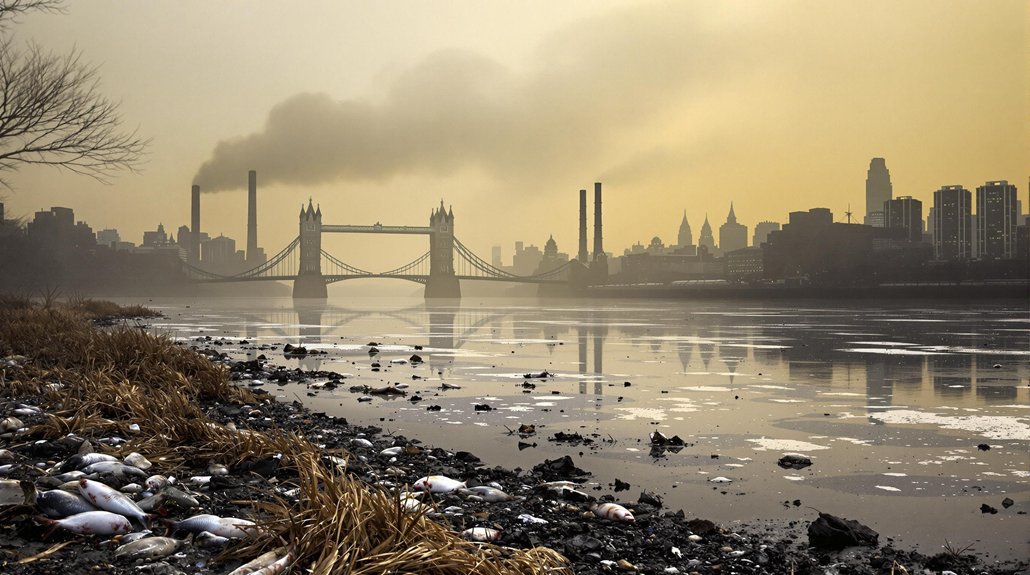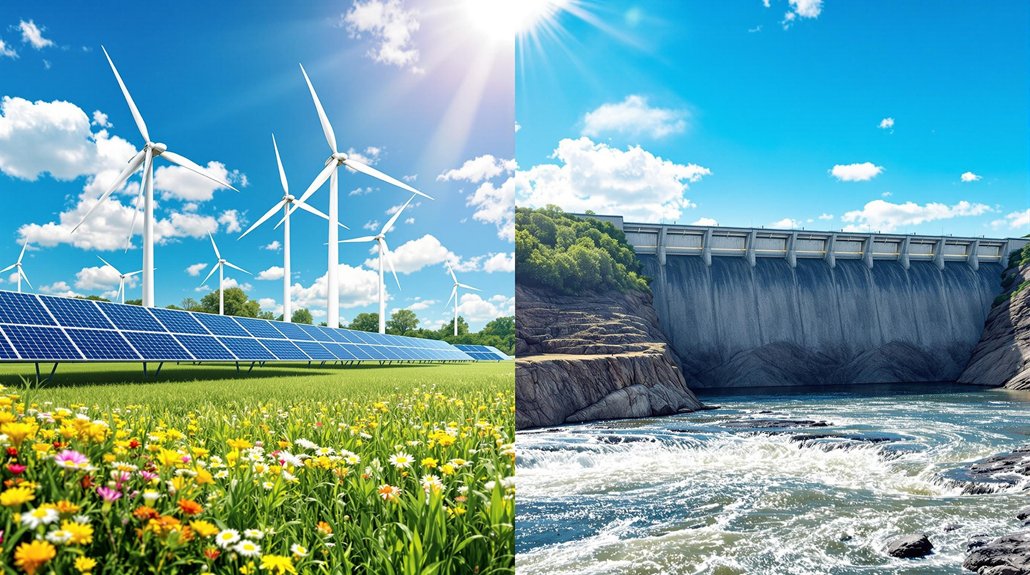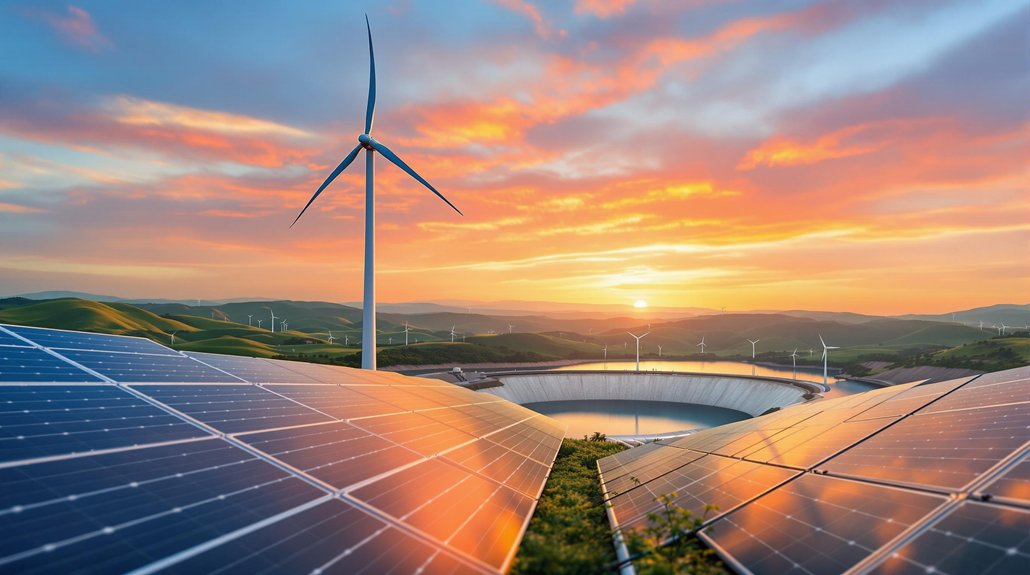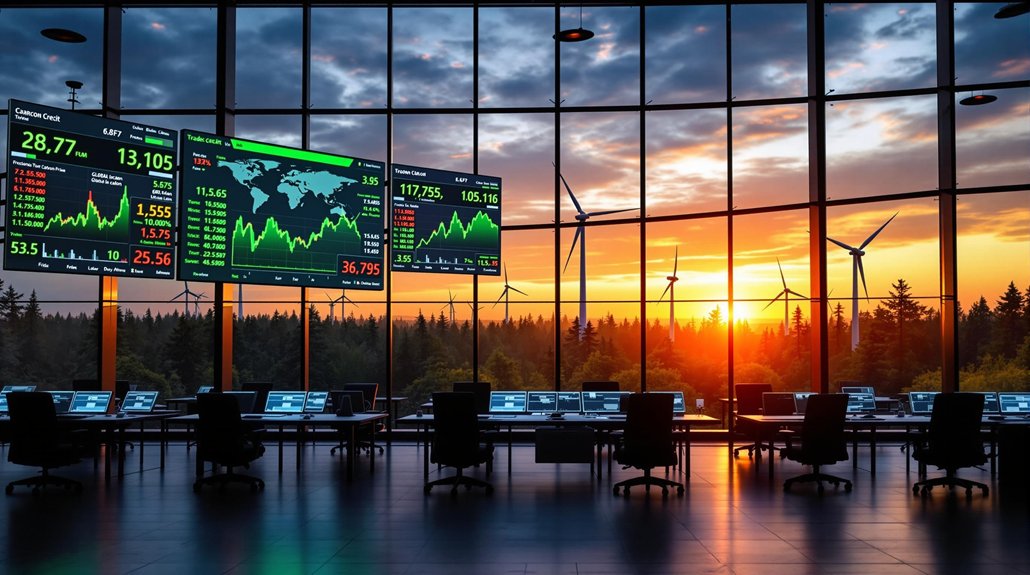The UK’s environmental report card looks pretty grim. Air pollution kills 40,000 people annually, while rivers double as sewage dumps thanks to water companies’ questionable practices. Climate change is wreaking havoc through floods and storms, wildlife numbers are plummeting, and recycling rates remain stuck at 45%. Poor communities get hit hardest with the worst pollution levels and limited green spaces. The government keeps making promises, but their track record tells a different story.
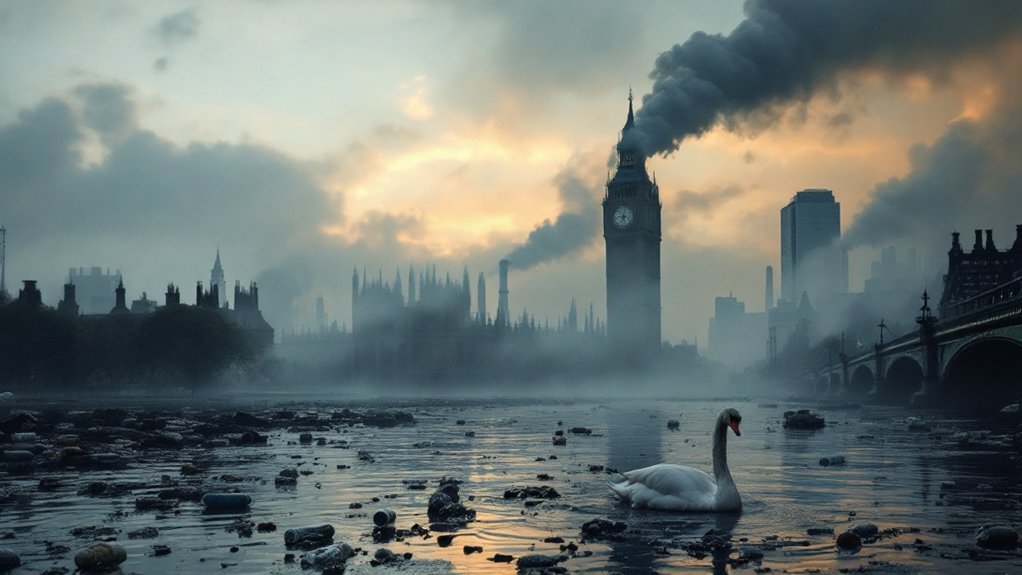
While the United Kingdom projects a polished image of rolling green hills and quaint countryside villages, the reality is far messier. A staggering 40,000 people die early each year from air pollution, with London’s smog-filled streets routinely breaking legal limits. Recent data shows PM2.5 levels decreased by 54% between 2003 and 2023. The culprit? Mostly vehicles chugging along congested roads, spewing out toxic fumes while DEFRA scratches its head over missed air quality targets.
Behind Britain’s postcard-perfect facade lurks a deadly reality: 40,000 annual deaths from vehicle pollution while regulators fumble for solutions.
The water situation isn’t any prettier. Rivers have become cocktails of agricultural runoff and storm overflow sewage. Water companies keep getting slapped with fines for pollution incidents, yet somehow microplastics keep showing up in marine environments like uninvited party guests that won’t leave.
Climate change is breathing down the UK’s neck too. The government’s made grand promises about net-zero emissions by 2050, but rising sea levels and extreme weather events aren’t exactly waiting around for bureaucratic timelines. Lord Stern of Brentford points to the storms and flooding of 2014 as undeniable evidence of climate change. Meanwhile, British wildlife is having an absolutely terrible time – 41% of species have been declining since the 1970s. Turns out destroying habitats and intensifying agriculture isn’t great for local ecosystems. Who knew? The burning of fossil fuels continues to drive ocean acidification and biodiversity loss across British waters.
The waste situation is a perfect example of British efficiency – or lack thereof. Recycling rates have hit a wall at 45%, while plastic pollution continues its reign of terror. Landfills are filling up faster than a pub on Friday night, forcing more waste into incinerators.
At least there’s some good news about forests – UK forest cover is increasing, though at 13% it’s still pathetically low by European standards.
Perhaps the most bitter pill to swallow is the environmental inequality. Deprived areas cop the worst of the pollution, while access to green spaces follows the predictable pattern of postcode lottery. Climate change impacts hit vulnerable groups the hardest, because apparently regular social inequality wasn’t enough.
Environmental justice is supposedly becoming a policy focus, but given the track record on other environmental issues, maybe don’t hold your breath – the air quality’s bad enough already.
